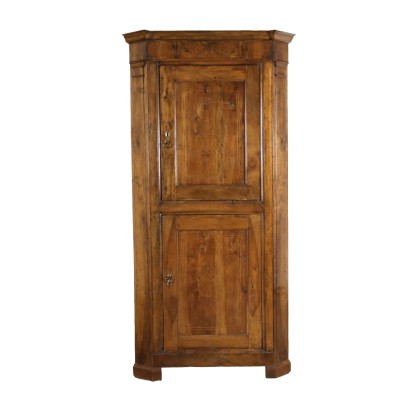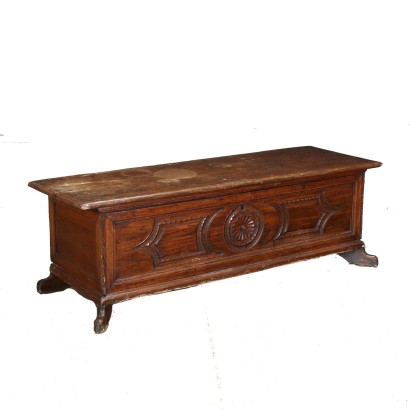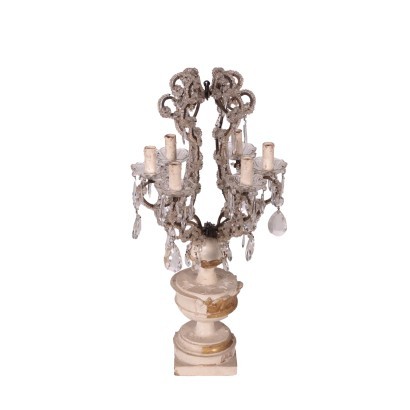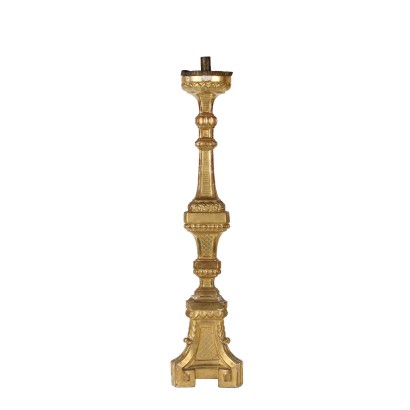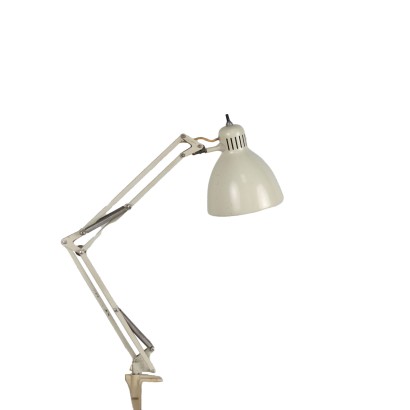Louis Philippe Corner Cabinet Walnut Italy XIX Century - Emilia Romagna Mid 19th century
Features
Emilia Romagna Mid 19th century
Style: Louis Philippe (1830-1848)
Age: 19th Century / 1801 - 1900
Origin: Emilia Romagna, Italy
Main essence: Maple , Cherry , Walnut
Description
Louis Philippe corner cabinet in walnut and cherry, Emilia mid-19th century. Charles X style maple inlays on the hatbox and on the two doors. Newly rebuilt interior.
Product Condition:
Product that due to age and wear requires restoration and resumption of polishing.
Dimensions (cm):
Height: 212
Width: 107
Depth: 67
Additional Information
Style: Louis Philippe (1830-1848)
The Louis Philippe style develops in a context characterized by two main factors: the expansion of the bourgeoisie and the advent of the industrialization of production processes.This style therefore faces the decline of artisans and the new needs of economy and comfort.
Aesthetically it incorporates elements from the past, especially from the Gothic and the Renaissance, preferring very curved shapes for the seat backs, legs and deer-like feet, with a very rich decoration.
It mainly uses dark woods: ebony, rosewood and mahogany, side by side for contrast with light elements.
Find out more with our insights:
The Louis Philippe style
Classic Monday: Luigi Filippo and Umbertina consoles in comparison
Age: 19th Century / 1801 - 1900
19th Century / 1801 - 1900Main essence:
Maple
Hard, light wood used for inlays. It grows mainly in Austria, but it is widespread throughout the northern hemisphere, from Japan to North America, passing through China and Europe. It is one of the lightest woods ever, tending to white, it is similar to lime or birch wood. The briar is used in the production of ancient secretaires .Cherry
Obtained from prunus cerasus , a plant of oriental origin, it is a hard wood with a light and delicate color, with a reddish vein. Due to its diffusion and availability it was used in Europe in popular furniture. In cabinet making, in the seventeenth century, it was widely used in France and England for inlay work. In Italy it was very successful in Lucca. It was also very popular in the United States for the manufacture, from the late 1600s, of commonly used furniture.The dictionary of antiques: Eclecticism
Classic Monday: a sofa from the 1800s example of eclecticism
Walnut
Walnut wood comes from the plant whose botanical name is juglans regia , probably originally from the East but very common in Europe. Light or dark brown in color, it is a hard wood with a beautiful grain, widely used in antique furniture. It was the main essence in Italy throughout the Renaissance and later had a good diffusion in Europe, especially in England, until the advent of mahogany. It was used for solid wood furniture and sometimes carvings and inlays, its only big limitation is that it suffers a lot from woodworm. In France it was widely used more than anything else in the provinces. In the second half of the eighteenth century its use decreased significantly because mahogany and other exotic woods were preferred. Alternative proposals
It could also interest you



